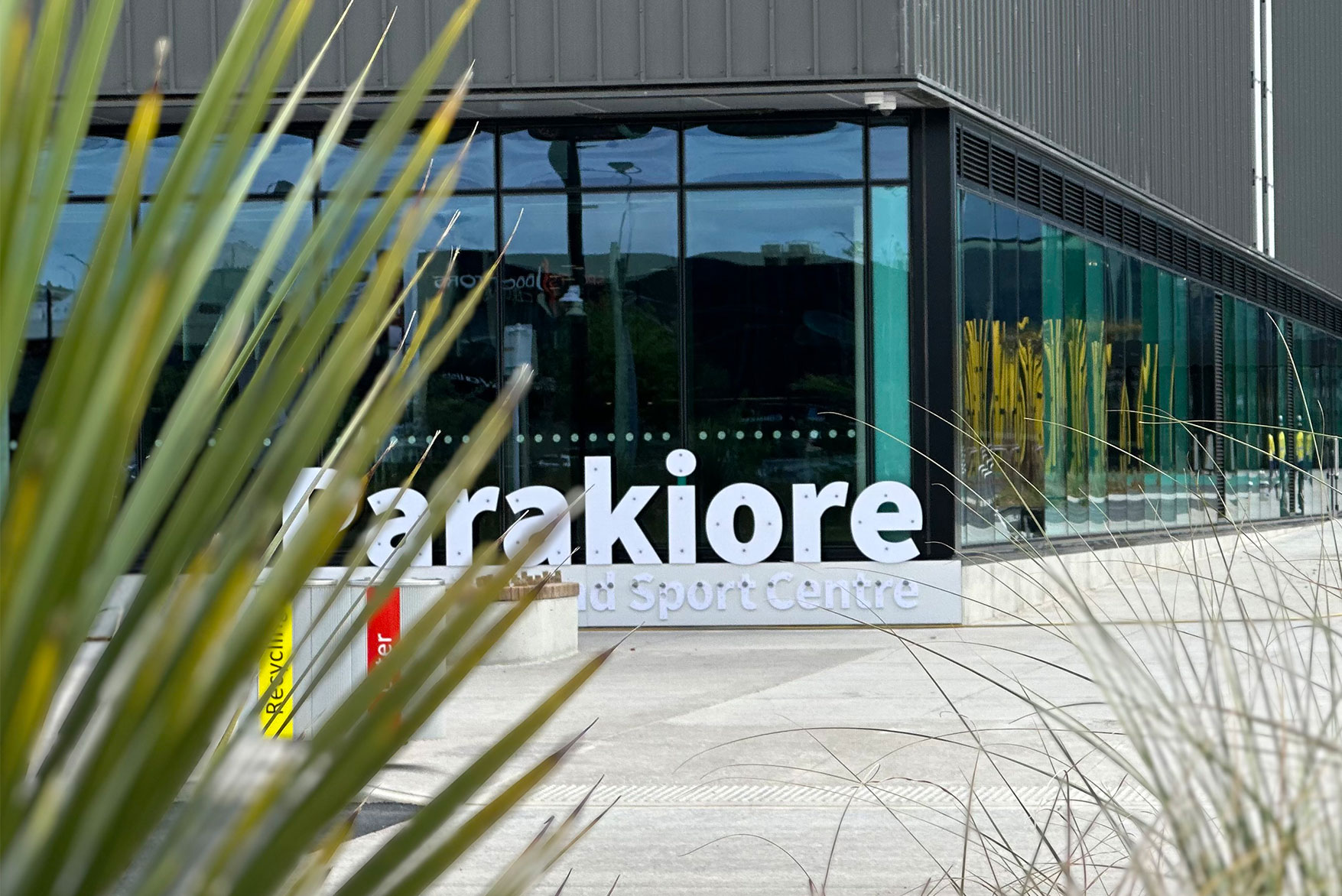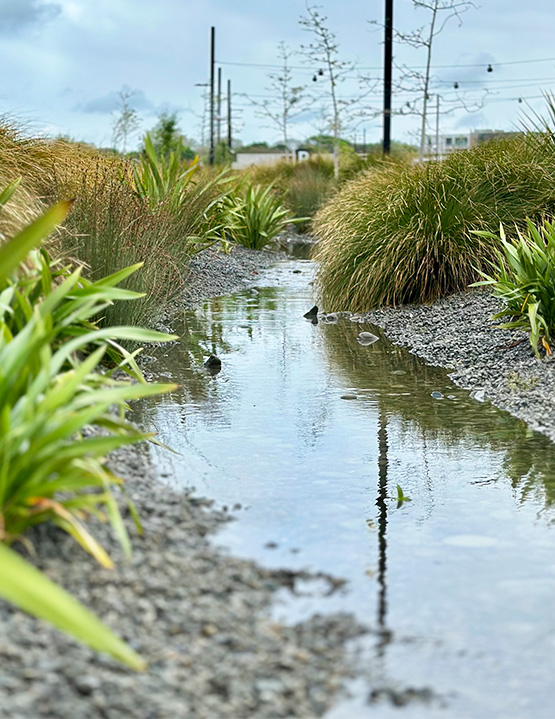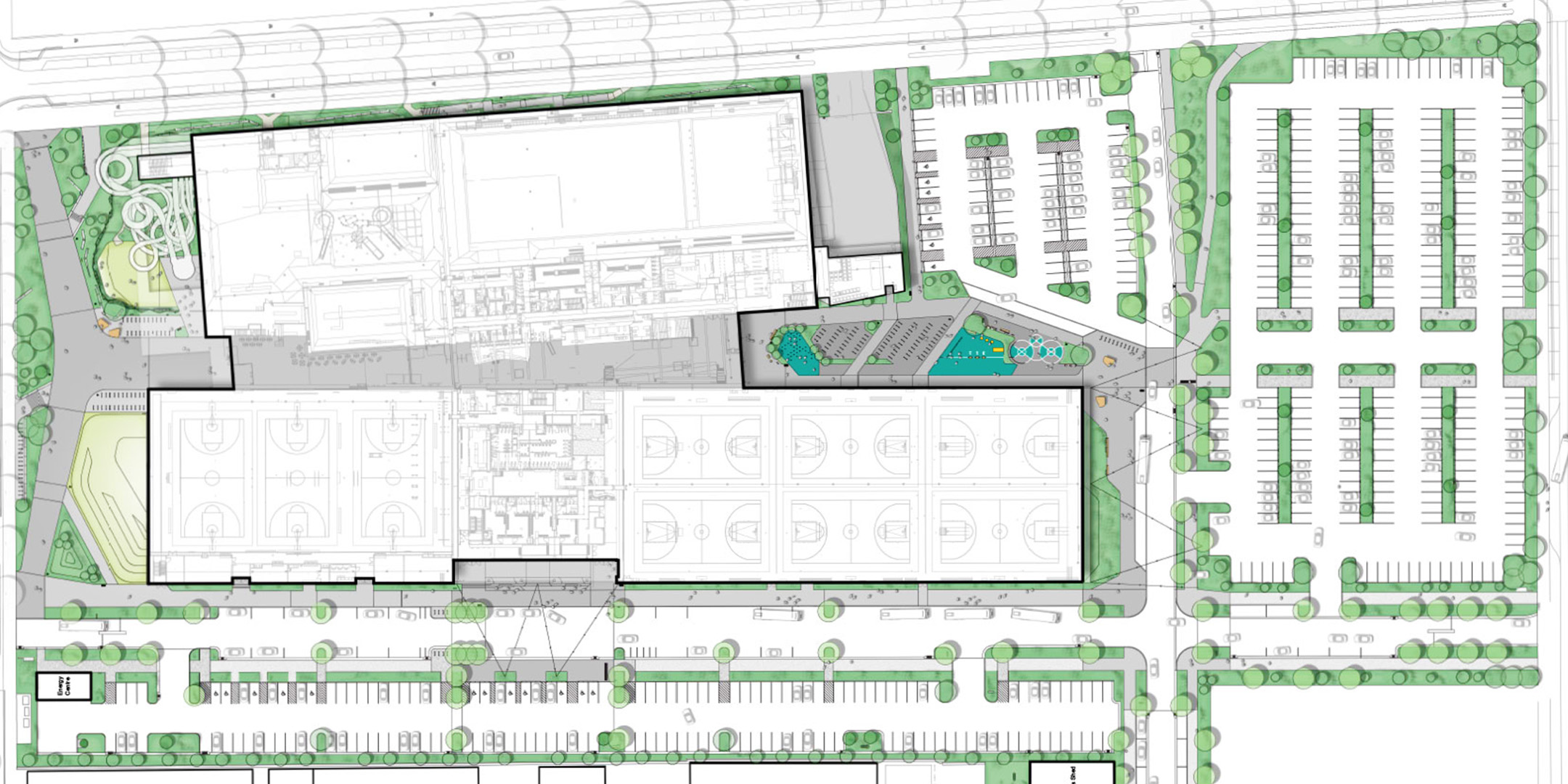Boffa Miskell worked with the project architects to ensure that the open spaces surrounding Parakiore Recreation and Sport Centre would complement the built facility, while providing for arrival and gathering functions at entry points and a green gateway into the central city from the south. The design complements the landscape treatments used on other anchor projects to help create a recognisable ‘family’ of significant public spaces.
A key aspect of this project was to realise a landscape that speaks distinctively of place. This has been achieved through a contemporary interpretation of Raupō Creek and the wetland that once existed on the site and was developed in collaboration with Ngāi Tahu’s cultural advisory team, Matapopore, to develop a planting palette that includes swales with native vegetation and a large wetland.
The vegetation strategy aims to provide distinctive and appropriate character to complement the building architecture, external realm components and to fit within the wider Christchurch landscape context. Extensive planting of site-appropriate species in low areas provides a strong landscape foreground to the building.
Informal opportunities for jumping, climbing, and play for all ages and abilities are key components of the landscape and entry experience to the Centre, with tether-ball, balance beams and climbing poles provided along with a suite of street furniture to encourage people to enjoy the spaces outside the facilities buildings. Custom, colourful fence posts and Ronstan fence and balustrade netting play further on the idea of the Raupō Creek and harvesting tuna/eels.
An important component of the landscape design was to include landscape areas that help treat surface runoff and ‘soften’ the expanse of hardstand areas, as well as space to prioritise cycling and pedestrian connections. Space and infrastructure for direct pedestrian and cycle links to the Centre’s access points help to create an ‘active landscape’ that invites walking and cycling and strengthens community participation in sport and recreation.
CPTED (Crime Prevention Through Environmental Design) assessments were prepared at both the concept and detailed design phases to ensure the safety, legibility and long-term functionality of the public realm. This work included a full CPTED audit and receiving-environment analysis, assessing how the Centre integrates with the surrounding streets, wider pedestrian network and neighbouring land uses. The intent was to create a landscape that supports safe movement at all times of day, aligns with the recovery-era Anchor Project principles, and reinforces welcoming arrival spaces that encourage participation in sport and recreation.
Key challenges identified through design development centred on reducing opportunities for concealment along key pedestrian routes, restricting access to the loading and service areas, and improving natural surveillance given the internal configuration of the building, particularly the deep-set southern entrance. Additional considerations included securing access around the hydroslides, ensuring the carpark could be safely closed after hours to discourage anti-social behaviour, and supporting the development of a logical, intuitive pedestrian network across the wider precinct. These CPTED responses were integrated into the overall landscape design, contributing to a coherent and safe public environment.
Design development and documentation has been completed in a BIM environment using Revit, which has encouraged a coordinated approach to design between disciplines, enabled the testing of the design in virtual reality and through 3D printing, and allowed the client and collaborators to experience the design proposals through virtual reality.
The construction observation period was longer than expected due to COVID-19 and other site conditions, however collaboration and coordination efforts with the contractor and project design team are ensuring a high-quality facility with welcoming and interesting external spaces will greet the public when the Centre opens.




